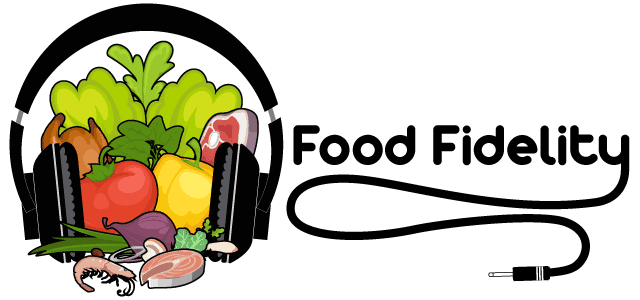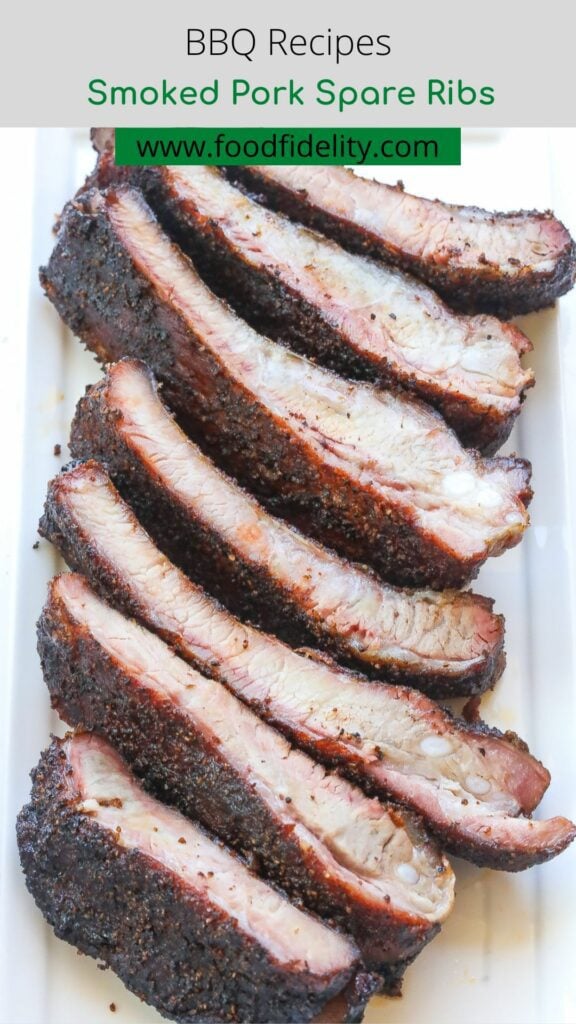Indulge in succulent perfection with our smoked pork spare ribs recipe. Expertly seasoned, slow-cooked to tender perfection, and infused with smoky richness, these ribs promise a flavorful feast that's sure to satisfy barbecue cravings.
Related Rib Recipe Posts:
- Jerk Baby Back Ribs
- 3-2-1 Ribs
- Smoked Rib Tips
Is there anything better than a rack of smoked spare ribs? Juicy, flavorful, and absolutely delicious, these ribs are definitely a crowd pleaser. And the best part is that they're really easy to make!
You just need a smoker or an outdoor grill, and some basic smoking supplies. So get ready to cook up some amazing ribs at your next backyard cookout or summer BBQ.
If you're looking for a delicious and easy smoked St. Louis spare ribs recipe, you've come to the right place! This recipe is perfect for any backyard cookout or summer BBQ.
It’s football season, which means tailgating for me! Ribs are a must, especially pork spare ribs. These are slow-smoked for tenderness and finished with a homemade dry rub for a nice flavorful crust on the exterior. The dry rub is excellent, meaning no sauce needed!
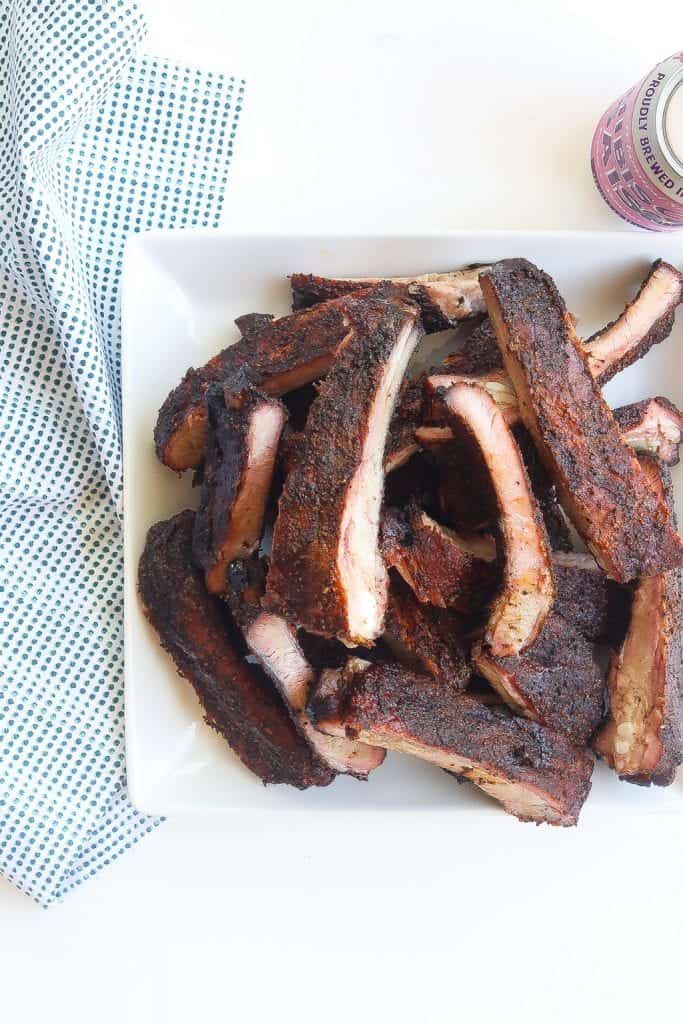
what are pork spare ribs?
The two most common types of pork ribs are baby backs and spare ribs. Baby backs are a Midwest and Northern phenomenon. Down South and in Texas spare ribs are king. Spare ribs are from the rib cage between the back ribs (near the spine) and the sternum of the pig.
Butchers may cut the spare ribs a few different ways including St. Louis Style ribs or Kansas City Style. Both are spareribs, but look very different in terms of how they’re trimmed.
Spareribs are the section of the pork rib cage between the loin back ribs (near the spine) and the sternum or breast bone. Commercially, sparerib racks contain from 14 to 16 bones, but sometimes if bones are damaged at the processing level (before they reach the supermarket), these may be removed before packaging, so a rack in your butcher’s meat counter might contain fewer than this.
Sparerib is commonly the name given to this entire rack of ribs positioned as I have described, but it is often further portioned by butchers into a couple of other inventions, if you will, that are very popular among many shoppers. For a breakdown of the different types of spare ribs cuts check-out this article on The Many Different Cuts of Pork Ribs.
what makes st. louis-style ribs different?
The "St. Louis style" refers to how spareribs are trimmed or cut. Visually the end of the ribs and tips are cut to create a rectangular rack of ribs.
If you plan to do your own trimming feel free to follow this guide for St. Louis styleribs. This is a popular cut and presents well in terms of how they look when served as you get ribs that are pretty uniform.
Ingredients Needed to Make This Smoked Ribs Recipe
For the dry rib spice rub
- Kosher Salt
- Black pepper
- Paprika
- Chili powder
- Garlic powder
- Brown sugar
- Mustard Powder
For the ribs
- Slab St. Louis cut spare ribs (trimmed of excess fat)
- Barbecue sauce (optional)
how to cook dry rub ribs (slow cooking step by step)
If using pre-cut/trimmed ribs go to the next step. Otherwise using a sharp knife trim the rack of ribs in the rectangular St. Louis style cut mentioned earlier in the guide.
Next, prepare your dry rub recipe by combining all dry spices in a small bowl and mixing well. Place the raw ribs on a long cookie sheet. Add the rub mixture generously all over on both sides of the ribs, making sure to cover them completely.
For the most tender ribs prepare your smoker for indirect heat. Peheat your smoker or grill to medium-low heat (250 degrees f) and place ribs bone side down on the grill grate. Close the lid of the grill and cook ribs for 4-5 hours or until tender.
If using a bbq sauce, during the last hour of cooking, brush the ribs with your favorite BBQ sauce.
Finally, remove the barbecue ribs from the grill and allow them to rest for 5-10 minutes before cutting into them. Serve with a homemade BBQ sauce or your favorite BBQ sauce.
what to serve with smoked ribs
Smoked pork spare ribs are a flavorful and hearty main dish that pairs well with a variety of sides. These sides not only complement the smoky flavor of the pork spare ribs but also provide a balanced and satisfying meal for any barbecue or family gathering. Check these out:
Classic Sides
- Coleslaw: A tangy, creamy coleslaw adds a refreshing crunch that complements the rich, smoky ribs.
- Baked Beans: Slow-cooked, savory beans add a hearty touch to the meal.
- Potato Salad: Creamy potato salad provides a comforting and classic side.
- Macaroni and Cheese: The creamy, cheesy goodness of mac and cheese pairs well with the smoky flavors of the ribs.
Vegetables
- corn on the cob: Sweet, buttery corn on the cob is a great summer side for ribs.
- Collard Greens: Southern-style collard greens offer a savory, slightly bitter contrast to the rich ribs.
Salads
- Cucumber Salad: A light, refreshing cucumber salad with a vinegar dressing balances the richness of the ribs.
- Tomato and Avocado Salad: Fresh tomatoes and creamy avocados with a lime vinaigrette offer a refreshing complement.
- Pasta Salad:
Starches
- Mashed Potatoes: Creamy mashed potatoes are a comforting side that pairs well with smoky ribs.
- Sweet Potato Fries: Crispy, slightly sweet fries add a tasty contrast.
Sauces and Condiments
- BBQ Sauce: Offer a variety of BBQ sauces for dipping, such as tangy, sweet, or spicy options.
- Pickles: Tangy pickles add a nice bite and balance the richness of the ribs.
How to prepare ribs for the grill
Should I Remove The Tough Membrane?
If seasoning is the first consideration for smoking ribs, what to do about the membrane is a close second. The membrane is that thin skin that runs on the bone side of a slab of ribs. To remove or not remove is the great debate, and there are strong opinions supporting both views.
For me, it’s a personal preference thing, so I’ll share both perspectives and leave it to you to decide. For the pro-membrane side, it comes down to texture. They like the “snap-like” quality it provides similar to the snap you get from a tight sausage casing.
There is also the feeling that the membrane helps the ribs retain the fat and meat juices which adds to the flavor and tenderness.
The anti-crowd (most of the competition guys fall into this camp) remove the membrane because they believe it hinders the ribs from absorbing the smoke properly and thus hindering taste.
At the end of the day, you have to weigh convenience, taste, and texture. I can tell you unless you smoke ribs for a living and/or eat them quite regularly you’d be hard-pressed to tell the difference. If I’m cooking a slab or two I will more often than not remove the membrane, but any more slabs than that and I don’t bother.
Removing the membrane is not overly difficult, but it is another step and thus adds time. If you prefer or want to try without membrane feel free to read this article on removing membranes from pork spare ribs or watch this short video.
How to remove the membrane from a slab of ribs
For instruction and/or video help in removing the rib membrane see links below. You'll need a paper towel to keep the ribs dry and grip the slippery membrane. A rounded utensil or dull knife will also be useful.
How to remove the membrane from ribs
Video Tutorial For Removing Membrane From Ribs
Dry Marinade or Wet Marinade
Most meat recipes call for wet marinades and ribs are no exceptions. However, I subscribe to the Texas and Memphis way, i.e. strictly dry rub for ribs. No sauce for this boss, yet the ribs are on point like Phife Dawg.
I prefer dry rubs for two reasons. One rubs depending on how you make them deliver more complex flavor. Two there is nothing like the experience of biting through a crusty exterior to get to that juicy interior. The rub, through the cooking process, creates that layer or crust.
Making Your Own Homemade Dry Rub
Spice mixes and dry rubs are a passion of mine, especially for ribs. Rubs allow you to put your personality into the dish. Every rib guy I know has a secret dry rub for ribs that they guard stronger than Fort Knox.
I tend to be a bit more open and generous with mine, with the exception of the signature rub. However, I always encourage people to start with a base rub and build on it to your own personal style and flavor. If done correctly, your ribs should not need any sauce.
Base Rib Rub
My base rib rub starts with coarse salt and coarse pepper. I like a peppery taste and the coarse grains add character and texture. I then add brown sugar and smoked sweet paprika. The sugar balances against the salt and also help with both color and caramelization during cooking. Paprika gives that dark red color along with an earthy flavor profile.
That’s pretty much the base that I build from. Garlic powder and some heat via cayenne or chili powder are secondary spices I like to add. Anything beyond these are twists, spins, and pizzaz! Cumin, dry herbs, cinnamon, allspice, fennel seed, mustard powder, etc. provide that next level flavor.
How Do You Make a Dry Rub?
Dry rubs are incredibly easy to make in your own kitchen with a simple combination of herbs, spices, salts, and sugars you likely already have in your spice cabinet and can easily be adapted with a little more of this and a little less of that to suit your tastes.
Herbs and Spices: Start with your base and add varying amounts of different dried herbs and spices until you find a few combinations that work for you. Here are a few considerations for your custom dry rub:
Kosher Salt
Black Pepper
Sweet paprika
Dark brown sugar
Garlic Powder
Onion Powder
Chile powder
Dry mustard
Allspice
Cayenne pepper
How to store your rib rub
Any rub can be made ahead in your desired quantity. They can also be stored for a good month or two. Just make sure to store them in airtight containers and keep in dark cool places. I keep these bottles on hand for my rubs
How long do you marinate the ribs before cooking?
I prefer to marinate my ribs overnight, but then again I’m a serious rib fanatic and tend to treat smoking spare ribs like its a holiday. If you don’t have the time, at a minimum you’ll want to marinate your ribs for a least 3 hours. I know there are those who cook the ribs as soon as they’ve rubbed them down.
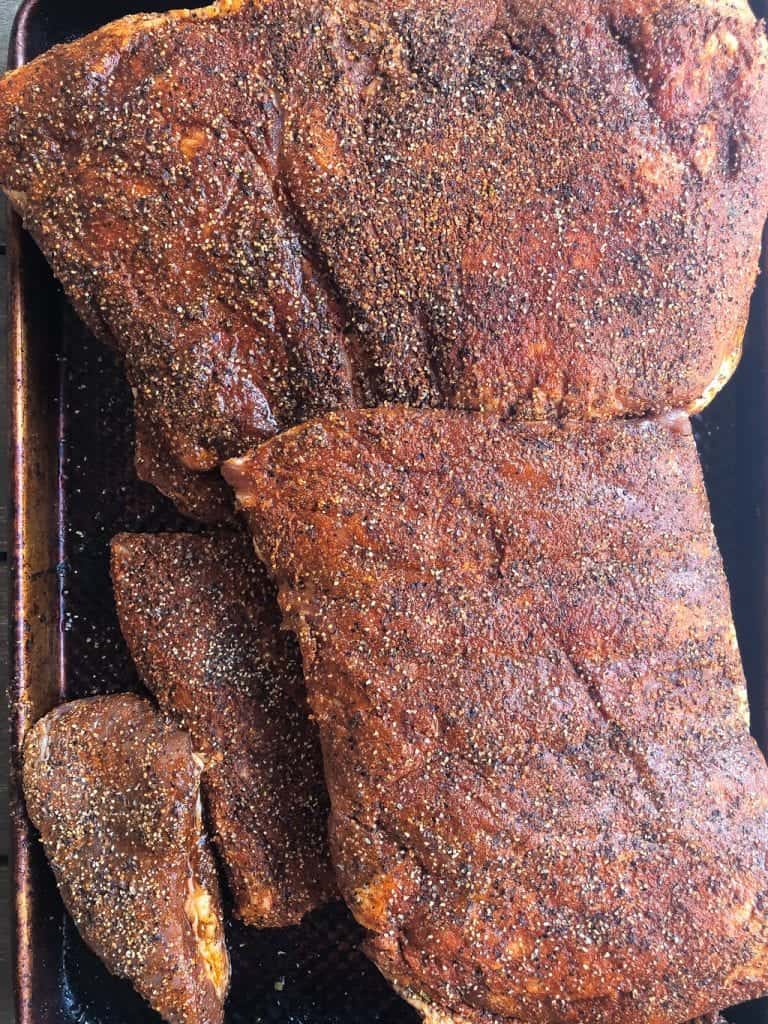
how to cook pork spare ribs
Ribs are super simple to cook. They just need time, as there is no good way to speed up time in the smoker. Slow and low is the tempo! This is the key to getting moist juicy ribs as low heat over time is what breaks down spare ribs.
Your dry rib rub marinade is critical as well, as the salt draws out the moisture as well as aids the flavors from the other spices in penetrating the meat below the outer surface.
Time, time, and more time plus a good rub is all you need. Gimmicks and “flavor enhancers” are unnecessary. "Fall off the bone" ribs is not a good thing! It’s a marketing gimmick. Bone tender is something different. We want ribs that pull away from the rib bone easily but not fall off.
If you have bones that can easily be pulled away from the meat without any resistance then you have overcooked or steamed ribs which is suboptimal flavor and texture. Bones should easily pull away, but there should be some effort required.
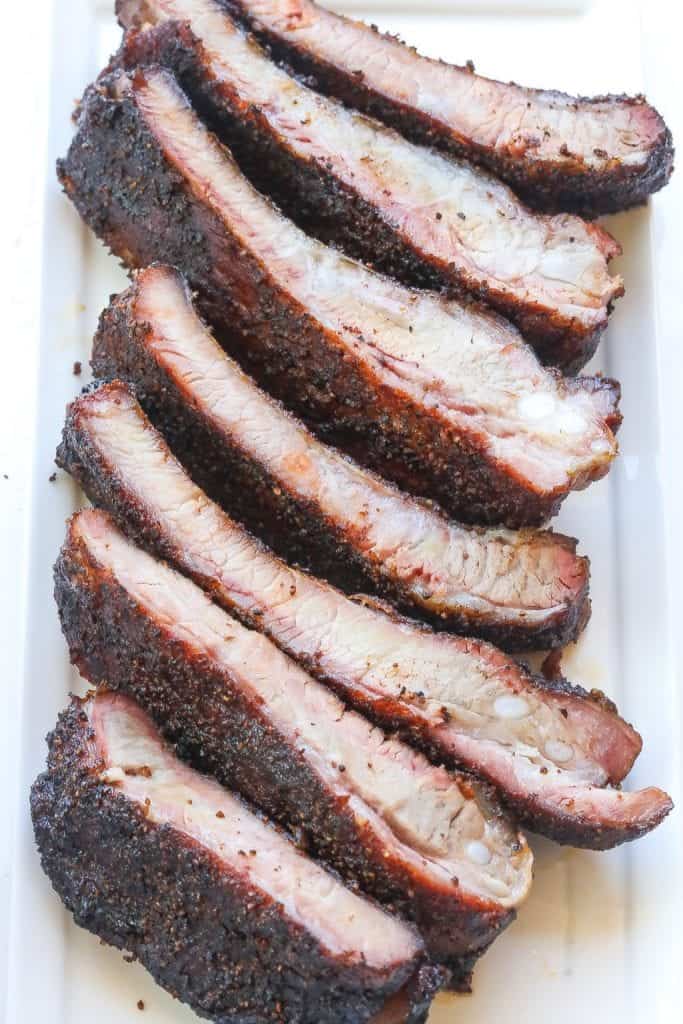
smoked pork spare ribs cooking tips
- Depending on preference peel the membrane from back side of ribs and trim excess fat.
- For more even cooking cook spare ribs upright using a rib rack
- Fill a spray bottle halfway with apple juice or apple cider vinegar and spray each hour of cooking for additional moisture
- Do not, and repeat do not EVER PAR BOIL your ribs! It should be illegal!
- Cook between 250 - 275 degrees F
- The recipe works for baby back ribs also
- Let ribs rest for 15-20 minutes before slicing
- Save the tips and ends when carving ribs and make smoked rib tips.
- The technique also works with baby back ribs. Also try the rub with oven baked ribs as well. If you want to move away from pork rib to beef rib you can too from a flavor perspective. Technique wise smoking beef ribs is totally different though.
- Pair these ribs with sides like calamari salad, Southern potato salad, or Southern collard greens. Even better check out this roundup of great sides to pair with BBQ recipes.
- For other grilled or smoker recipes try these Smoked Trout or this African Beef Suya Skewers.
Common Issues with Smoking Ribs and Solutions
Addressing common challenges during the smoking process is crucial to achieving perfect smoked spare ribs. Here are some common issues and their solutions:
- Inconsistent Temperature:
- Issue: Fluctuating temperatures can lead to unevenly cooked ribs.
- Solution: Invest in a reliable smoker thermometer and maintain a steady temperature. Adjust air vents as needed.
- Dry Ribs:
- Issue: Over-smoking or prolonged cooking can result in dry ribs.
- Solution: Monitor cooking time carefully, and use a water pan in the smoker to maintain humidity. Consider spritzing ribs with apple juice to add moisture.
- Tough Ribs:
- Issue: Ribs are not reaching the desired tenderness.
- Solution: Extend cooking time if needed, wrap ribs in foil during the final stages (the "Texas crutch"), or increase the cooking temperature slightly.
- Bitter Smoke Flavor:
- Issue: Using too much or the wrong type of wood can lead to bitter smoke.
- Solution: Use seasoned wood in moderation, and experiment with different wood types to find a balance of flavor.
- Rub Not Adhering:
- Issue: Seasoning rub not sticking to the ribs.
- Solution: Ensure ribs are dry before applying the rub. Consider using mustard as a binder for the rub.
- Uneven Smoke Ring:
- Issue: Inconsistent smoke ring formation on the ribs.
- Solution: Apply a uniform layer of rub, and maintain a consistent smoking temperature. Using a water pan can also aid in achieving a better smoke ring.
- Overpowered Smoke Flavor:
- Issue: Ribs taste overly smoky.
- Solution: Reduce the amount of wood used, or shorten the smoking time. Experiment with different wood varieties for milder flavors.
Frequently Asked Questions (FAQs) About Smoking Spare ribs
How long do you marinate the ribs before cooking?
I prefer to marinate my ribs overnight, but then again I’m a serious rib fanatic and tend to treat smoking spare ribs like it's a holiday. If you don’t have the time, at a minimum you’ll want to marinate your ribs for a least 3 hours. I know there are those who cook the ribs as soon as they’ve rubbed them down.
Do You Use A Dry Marinade or Wet Marinade?
Most meat recipes call for wet marinades and ribs are no exceptions. However, I subscribe to the Texas and Memphis way, i.e. strictly dry rub for ribs. No sauce for this boss, yet the ribs are on point like Phife Dawg.
I prefer dry rubs for two reasons. One rubs depending on how you make them deliver more complex flavor. Two there is nothing like the experience of biting through a crusty exterior to get to that juicy interior. The rub, through the cooking process, creates that layer or crust.
Can You Reheat Smoked Ribs?
Why of course! But I will say that cold ribs are every bit as good as cold pizza. I love leftover ribs. But if cold ribs ain’t your cup of tea, you can definitely and easily re-heat leftover ribs. I don’t bother with a microwave, as I find it alters the texture of the meat too much. Instead, I prefer to bake the ribs on low heat (225-240 degrees F) for about 20-30 minutes.
What Kind of Wood Is Best For Smoking Ribs?
I prefer fruitwood like apple or a hardwood like oak for these ribs. Whether you have cherry, apple, pear, etc. go with what is available to you. Just don't use mesquite as that super strong flavor will overpower everything else. Checkout this guide for pairing wood with smoked ribs for more detailed breakdown. If using wood chips I suggest soaking them in water beforehand to slow their burning.
How Long To Smoke Pork Ribs at 250 Degrees?
Smoking at 250 degrees F should take you about 4 hours depending on the size of the ribs and your ability to maintain a steady 250-degree temperature for the duration. The key is to trust the process and avoid excessively opening the smoker. Every time you open the smoker the temperature drops and it requires more time to reach the desired temperature again.
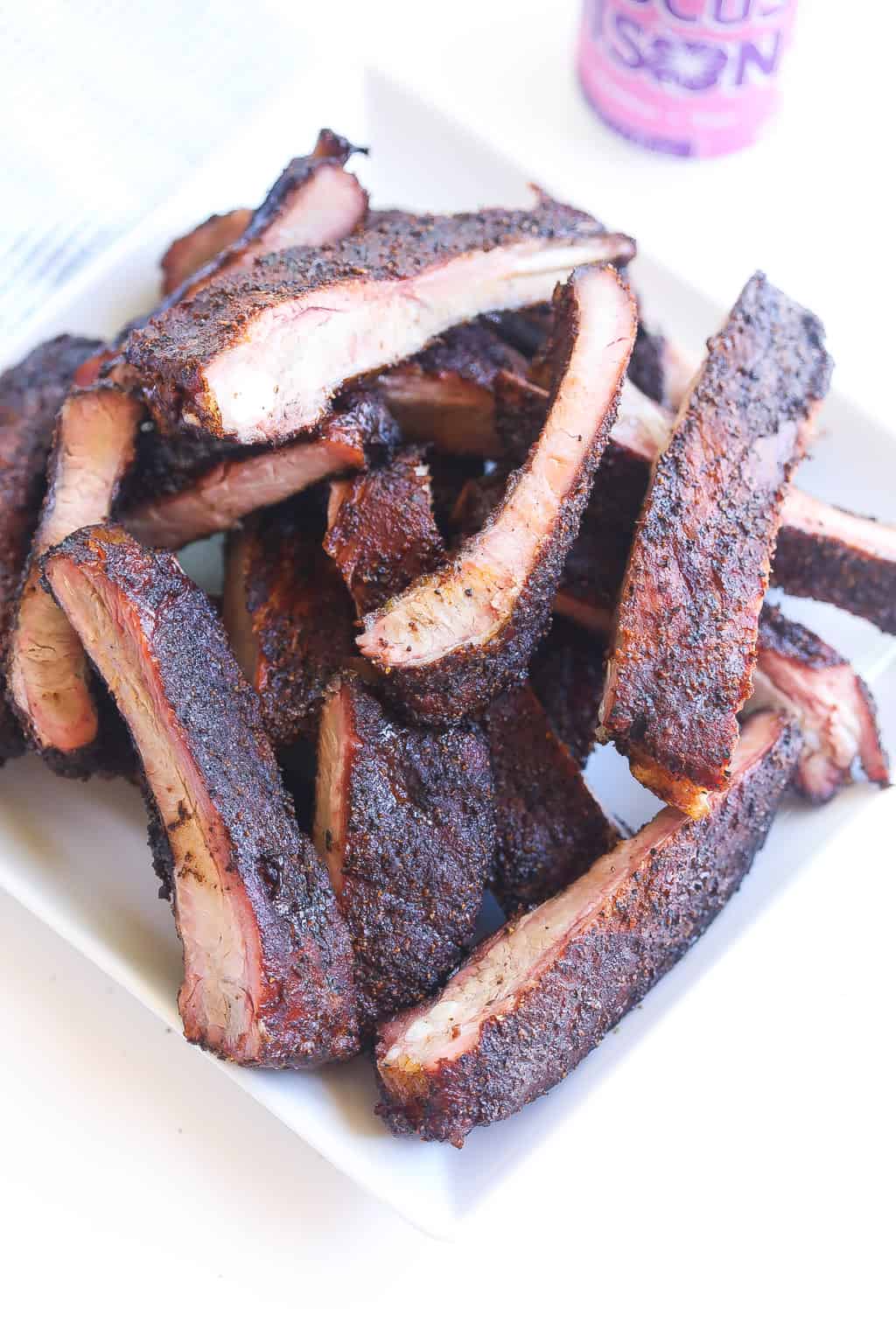
For other Rib Recipes try these:
Air Fryer Pork Ribs
Instant Pot Short Ribs
Sous Vide Short Ribs
Making Dry Rubbed Smoked Pork Spare Ribs
This recipe for smoked St. Louis spare ribs is delicious and easy to follow. The ribs are seasoned with a homemade rub and then slow-smoked over indirect heat, which gives them a smoky flavor and tender texture. We recommend using a smoker or charcoal grill for this recipe, but you could also use a gas grill if you prefer.
If you make these delicious smoked ribs please come back and leave me a comment below with your feedback. Definitely take a photo of the dish and be sure to tag #foodfidelity so that I can see them.
You can also keep up with my food exploits as well as original recipes! You can find me on Instagram, Facebook, Twitter, and Pinterest. If you like any of the music you find on the site, visit me at Spotify to find curated monthly playlists.
Ingredients
- 2 tablespoon Kosher salt
- 2 tablespoon Black pepper
- 3 tablespoon Paprika
- 1 tablespoon Chili powder
- 1 tablespoon Garlic powder
- 3 tablespoon Brown sugar
- 1 teaspoon Mustard Powder
- 1 rack pork spare ribs
Instructions
- Mix rub ingredients well, cover completely over ribs. Refrigerate overnight.
- Remove ribs from refrigerate and let reach room temperature
- Prepare smoker for indirect smoking. Pre-heat to 250 degrees. You’ll want to maintain temps between 225-250 degrees for the entire cooking time.
- Place ribs in the smoker (bone side down if you don’t have a rib racand smoke 3-4 hours or to whenever internal temp is about 175 degrees. The ribs are done when the meat starts to retract or pull away from bone exposing the edge of the rib.
